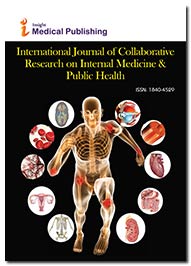Abstract
Clinical Profile and Outcome of Infective Endocarditis at the Aga Khan University Hospital
Background: The spectrum of infective endocarditis (IE) is significantly different in developed and developing countries. The present study was conducted to study the clinical profile and outcome of infective endocarditis in Pakistan.
Methods: A descriptive cross-sectional study with review of medical records for 188 patients admitted to our teaching hospital with a diagnosis of IE from January 1988 to December 2001. One hundred fifty-nine subjects fulfilled the modified Duke diagnostic criteria.
Results: Definite IE was found in 59.7% (95/159) patients, while the rest had possible IE. One-third of subjects had acute IE 55/159 (34.5%). Subacute IE was found in 62% (99/159) and Nosocomial IE in 3% of the cases. Eighty six (54%) were classified as having culturenegative endocarditis and 73 (46%) as culture positive. Ninty four patients (59%) had an underlying predisposing factor including congenital heart disease (31%) and rheumatic heart disease (21%). The most frequently isolated organisms were streptococci (52%) and followed by staphylococci (29%). Fourteen (8.1%) patients had right-sided cardiac involvement. Using univariate analysis, patients with heart failure, neurologic or renal complications, septicemia, nosocomial endocarditis, and prosthetic valve endocarditis were at increased risk of death (p ≤ 0.05), however no individual microorganism, or specific site, size, or morphology of vegetation seen on echocardiogram were significantly associated with death. Thirty-seven (23%) patients died of endocarditis or its complications.
Conclusion: Endocarditis continues to be an important contributor to morbidity and mortality in Pakistan, especially in young adults. Our patients differ from the west in terms of epidemiology, predisposing factors, microbiology, complications, and outcome
Author(s): Muhammad Tariq, Bilal Karim Siddiqui, Atif Jadoon, Mahboob Alam, Sohail Abrar Khan, Mehnaz Atiq, Raymond A. Smego
Abstract | Full-Text | PDF
Share this

Abstracted/Indexed in
- Google Scholar
- Genamics JournalSeek
- CiteFactor
- Directory of Research Journal Indexing (DRJI)
- WorldCat
- Proquest Summons
- Secret Search Engine Labs
Open Access Journals
- Aquaculture & Veterinary Science
- Chemistry & Chemical Sciences
- Clinical Sciences
- Engineering
- General Science
- Genetics & Molecular Biology
- Health Care & Nursing
- Immunology & Microbiology
- Materials Science
- Mathematics & Physics
- Medical Sciences
- Neurology & Psychiatry
- Oncology & Cancer Science
- Pharmaceutical Sciences

